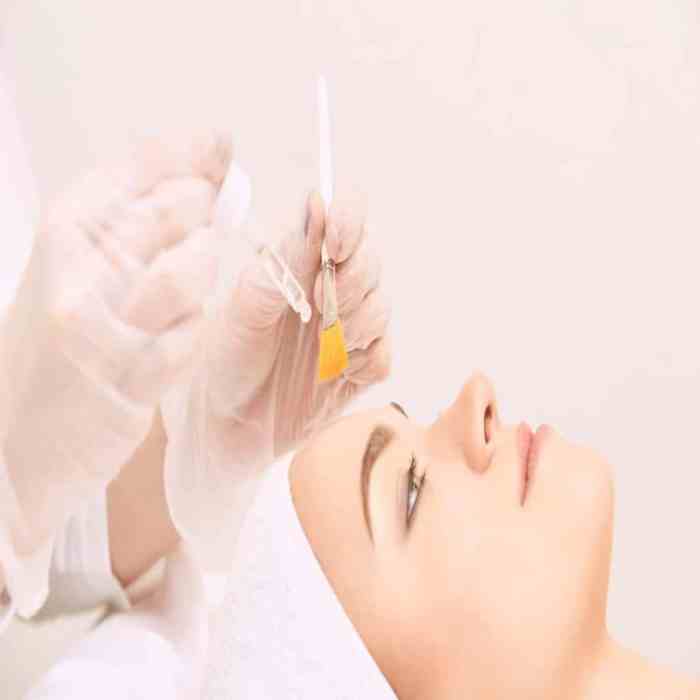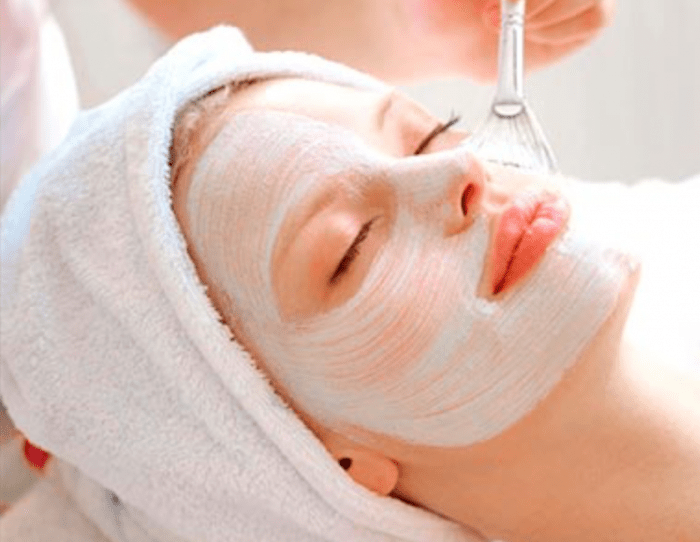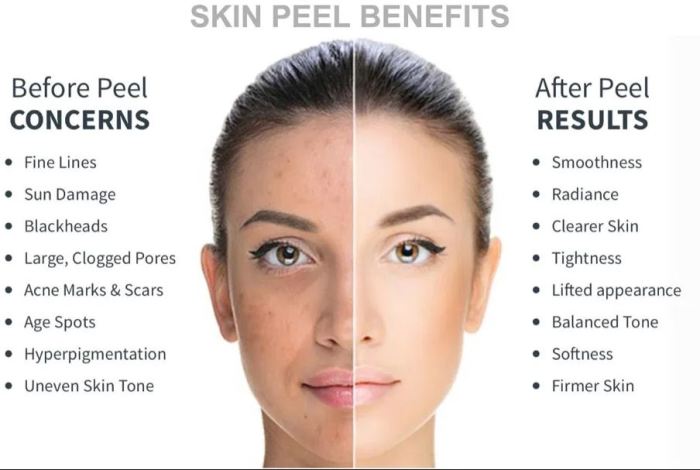When performing an enzyme peel an esthetician should look for – When performing an enzyme peel, an esthetician should look for specific indications and contraindications to ensure the client’s safety and achieve optimal results. This comprehensive guide will delve into the essential factors to consider, from skin assessment and enzyme selection to peel application and post-peel care, empowering estheticians to deliver effective and tailored enzyme peel treatments.
Skin Assessment: When Performing An Enzyme Peel An Esthetician Should Look For

Assessing the client’s skin type, sensitivity, and history is crucial before performing an enzyme peel. Understanding the skin’s condition helps determine the appropriate peel strength, application time, and post-peel care regimen.
Contraindications for enzyme peels include active acne, open wounds, sunburn, rosacea, eczema, and allergies to the peel ingredients.
Enzyme Selection
Enzyme peels utilize various enzymes, each with specific benefits:
- Papain (from papaya):Exfoliates, brightens, and soothes sensitive skin.
- Bromelain (from pineapple):Anti-inflammatory, decongesting, and helps reduce hyperpigmentation.
- Trypsin (from the pancreas):Breaks down proteins, promoting exfoliation and cell renewal.
- Subtilisin (from bacteria):Effective for removing dead skin cells and improving skin texture.
The enzyme selected should align with the client’s skin concerns and desired results.
Peel Application
The peel application process involves:
- Skin preparation:Cleanse and dry the skin thoroughly.
- Peel application:Apply the enzyme peel evenly using a brush or cotton pad, avoiding the eyes and lips.
- Monitoring:Observe the skin’s reaction during the application time, which varies depending on the peel strength.
Post-Peel Care
Post-peel care is essential for optimal results:
- Cleanse gently with a mild cleanser.
- Moisturize frequently to prevent dryness and promote healing.
- Use sunscreen to protect the newly exfoliated skin.
- Avoid harsh products or treatments for at least a week.
Expected results include improved skin texture, reduced hyperpigmentation, and a brighter complexion. Potential side effects may include temporary redness, dryness, or flaking.
Troubleshooting, When performing an enzyme peel an esthetician should look for
Common problems and their solutions:
- Over-exfoliation:Reduce application time or use a weaker peel.
- Allergic reaction:Discontinue use and seek medical attention if necessary.
- Excessive dryness:Increase moisturizer frequency and consider using a hydrating mask.
Popular Questions
What are the contraindications for enzyme peels?
Enzyme peels are not suitable for individuals with active acne, rosacea, eczema, or other inflammatory skin conditions. They should also be avoided on sunburned or recently tanned skin.
How often should enzyme peels be performed?
The frequency of enzyme peels depends on the client’s skin type and concerns. Generally, they can be performed every 2-4 weeks.
What are the expected results of an enzyme peel?
Enzyme peels can improve skin texture and tone, reduce fine lines and wrinkles, and enhance product absorption. They can also help to clear acne and reduce hyperpigmentation.

